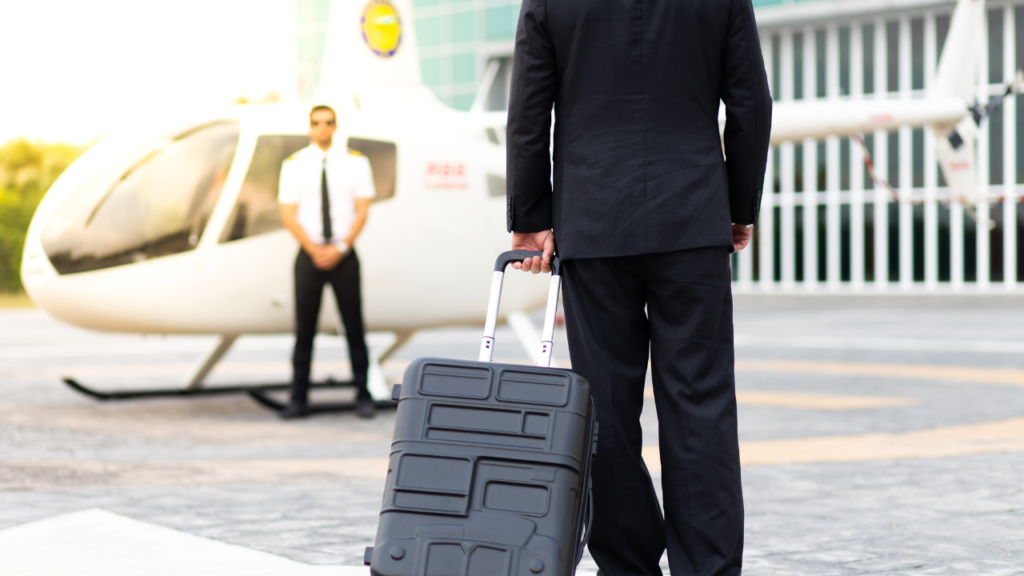The Evolution of Corporate Aircraft Security: From 9/11 to Today

The landscape of corporate aircraft security has undergone a dramatic transformation since the tragic events of September 11, 2001. This pivotal moment in history not only reshaped commercial aviation but also profoundly impacted the world of private and corporate air travel. In this blog post, we’ll explore the evolution of corporate aircraft security over the past two decades, examining how the industry has adapted to new threats, technological advancements, and changing regulations. Understanding this evolution is crucial for professionals in executive protection and corporate aviation security to stay ahead in an ever-changing field.
The Pre-9/11 Era:
Before September 11, 2001, corporate aircraft security was relatively relaxed compared to today’s standards. While basic safety measures were in place, the focus was primarily on convenience and privacy for high-profile clients. Security measures typically included:
– Basic identity checks for passengers and crew
– Limited screening of luggage and personal items
– Minimal restrictions on access to aircraft and facilities
The corporate aviation sector operated with a high degree of autonomy, with security protocols often developed internally by individual companies or aircraft operators.
The Immediate Aftermath of 9/11:
The 9/11 attacks served as a wake-up call for the entire aviation industry, including corporate aircraft security. In the immediate aftermath, several key changes were implemented:
1. Enhanced Passenger Screening: More rigorous identity verification and background checks were introduced for all passengers, including those on private flights.
2. Increased Facility Security: Access to corporate aviation facilities, including hangars and Fixed Base Operations (FBOs), became more restricted.
3. Crew Vetting: Stricter vetting processes for flight crews and ground personnel were established.
4. New Regulatory Oversight: The newly formed Transportation Security Administration (TSA) began to extend its reach into corporate aviation, introducing new security directives.
Case Study: In late 2001, a major corporate flight department overhauled its entire security protocol, implementing TSA-inspired screening procedures and investing in advanced identity verification technology, setting a new industry standard.
The Mid-2000s: Technological Advancements
As the initial shock of 9/11 subsided, the corporate aircraft security sector began to leverage technological advancements to enhance safety measures:
1. Biometric Systems: The introduction of fingerprint and retinal scanning for access control.
2. Advanced Communication Systems: Secure, encrypted communication channels between aircraft and ground control.
3. Surveillance Technology: Implementation of high-definition camera systems in and around corporate aviation facilities.
4. Cybersecurity Measures: As aircraft became more digitally connected, cybersecurity protocols were developed to protect against hacking and data breaches.
Industry Trend: By 2007, over 60% of Fortune 500 companies with corporate aircraft had implemented biometric access control systems in their aviation facilities.
The 2010s: Global Threats and International Cooperation
The past decade saw corporate aircraft security evolve to address more global and diverse threats:
1. International Standards: The development of global security standards for corporate aviation, such as the International Standard for Business Aircraft Operations (IS-BAO).
2. Threat Intelligence: Increased cooperation between corporate security teams and government agencies for real-time threat assessment.
3. Advanced Screening Technologies: Introduction of millimeter-wave scanners and explosive trace detection in some corporate aviation settings.
4. Insider Threat Mitigation: Development of comprehensive programs to address potential security risks from within organizations.
5. In-Flight Security Measures: Enhanced protocols for managing security incidents during flights, including the use of hardened cockpit doors and specialized training for crew members.
Expert Insight: “The 2010s marked a shift from reactive to proactive security measures in corporate aviation,” notes Dr. Emily Chen, aviation security expert. “We saw a greater emphasis on predictive analysis and threat prevention.”
Current Landscape and Future Trends
Today, corporate aircraft security is a sophisticated and multi-faceted field:
1. AI and Machine Learning: Utilization of artificial intelligence for anomaly detection in passenger behavior and baggage screening.
2. Drone Detection and Mitigation: Implementation of systems to protect against unauthorized drone activity near corporate aircraft and facilities.
3. Integrated Security Ecosystems: Development of comprehensive security platforms that integrate physical and cyber security measures.
4. Sustainability and Security: Balancing increased security measures with environmental concerns and efficiency in aircraft operations.
5. Pandemic-Related Protocols: Adaptation of security measures to include health screening and sanitation procedures in response to global health crises.
Looking ahead, experts predict continued evolution in areas such as:
– Quantum computing for enhanced encryption and secure communications
– Advanced materials for lighter, more secure aircraft structures
– Virtual and augmented reality for security training and simulation
Training and Development:
As corporate aircraft security continues to evolve, staying current with the latest trends and technologies is crucial for professionals in this field. Our Corporate Aircraft Security Course offers comprehensive training that covers:
– Historical context and evolution of aviation security measures
– Current best practices in corporate aircraft and facility protection
– Emerging technologies and their applications in aviation security
– Global regulatory compliance and international security standards
Endorsed by industry leaders and taught by experienced professionals, this course equips participants with the knowledge and skills needed to navigate the complex landscape of modern corporate aircraft security.
The evolution of corporate aircraft security from 9/11 to today reflects a journey of continuous adaptation and innovation. As threats evolve and technology advances, the importance of staying informed and prepared cannot be overstated. For professionals in executive protection and corporate aviation, understanding this evolution is key to providing top-tier security services.
Are you ready to elevate your expertise in corporate aircraft security and stay ahead of emerging threats? Enroll in our Corporate Aircraft Security Course today and gain insights into the latest trends, technologies, and best practices in the field. Visit https://www.executiveprotectioninstitute.com/courses/corporate-aviation/ to learn more and register. Don’t let your skills become obsolete in this rapidly changing landscape — equip yourself with the knowledge to lead in corporate aviation security!


